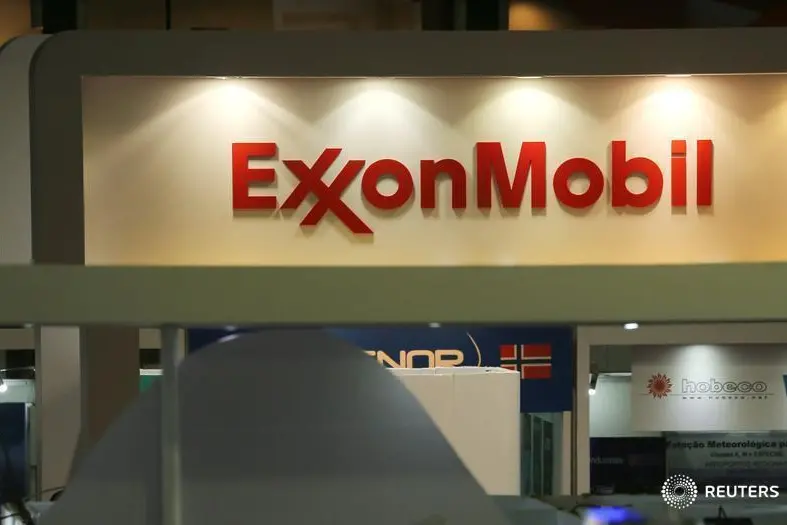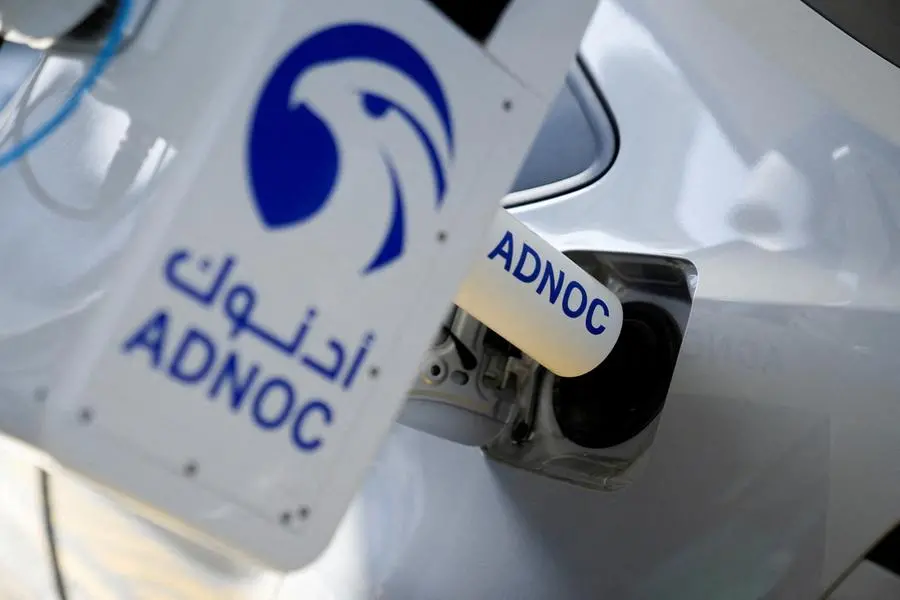PHOTO
Image used for illustrative purpose. A logo of the Exxon Mobil Corp is seen at the Rio Oil and Gas Expo and Conference in Rio de Janeiro, Brazil September 24, 2018. Sergio Moraes, Reuters
Exxon Mobil CEO Darren Woods' first five years at the oil company were marred by missed oil production targets, an investor rebellion and the company's biggest-ever financial loss.
Redemption came this year when - aided by a share price pumped up by high oil prices - he clinched a $60 billion deal to buy shale rival Pioneer Natural Resources to guarantee a steady stream of crude from the United States' most prized shale field.
Exxon's stock has underperformed rival Chevron over the course of Woods' tenure as CEO. The company recorded a $22 billion loss in 2020 in the depth of the pandemic. Now, his biggest challenge lies ahead as he executes a strategy to compete for investors demanding high returns and lower greenhouse gas emissions.
His plan aims to balance profits from cheaper barrels of oil closer to home, like Guyana's vast offshore oilfields, with a risky multi-billion-dollar promise to create and sell decarbonizing services at margins akin to oil.
"We can address the emissions without throwing out all the investments that have been made (in oil)," the CEO told Reuters at the climate summit COP28 on Saturday. "Whatever the demand is, we're competitive. That's the strategy."
Woods has set for himself a short four years to deliver on his latest strategy, according to Reuters interviews with Exxon executives, former employees, investors and partners.
The executive plans to lay out to investors a new era for Exxon on Wednesday, when he updates the company's capital spending plans and production curve to incorporate his recent goals.
That future includes pumping more than 4.4 million barrels of oil per day (bpd) by 2027, a goal that will require new technology to squeeze an extra 700,000 bpd or more from its existing shale wells.
He is expected to offer Wall Street an updated budget for addressing methane leaks, and the impact of a waning future for motor fuels and the rise of hydrogen fuels and battery-powered electric vehicles, costly issues with no simple solutions.
PAST IS PROLOGUE?
Exxon's track record of buying assets at peak levels has frustrated investors.
“You grow and you grow, and you grow, and then you sell it to Exxon,” said oil analyst Paul Sankey, from Sankey Research.
Woods' latest decision to concentrate future production in two large assets in the Americas contrasts his expansionist vision from five years ago, when Exxon sunk capital into low-margin, high-risk ventures around the world.
Among those projects was a $4 billion bet in 2017 with partners on drilling rights offshore Brazil. It was once a top prospect for growth, but Exxon so far has failed to find a drop on its own.
Analysts say Woods is implicitly asking the market for the benefit of the doubt on the acquisition of Pioneer and Denbury, a $4.9 billion carbon-pipeline firm Exxon bought to underpin its plans to sell carbon sequestration services to other companies.
"That was an easy ask with Guyana. Not so much for shale and (carbon capture and storage). We are not there yet," Sankey said.
So far, Woods' plans have turned investors demanding an energy transition strategy into believers - at least on climate.
"The path that they're going down is the path that we thought they should go down,” said Chris James, chairman of activist investor Engine No. 1 which led a victorious 2021 proxy fight that attacked Exxon for overspending in oil.
Woods deal for Denbury fits into an overall $17 billion bet on decarbonization and hydrogen through 2027. To allay investor worries about declining demand for gasoline and other fuels, he has restructured its downstream units to easily switch to chemical from motor fuels.
At the same time, the company plans to have a leading role in the vehicle electrification business. In November, Exxon pledged to become by 2027 a large scale producer of lithium, the raw material used in electric vehicle batteries.
MORE OIL VS GREEN AMBITION
Exxon's ambitious agenda includes starting up the world's largest hydrogen power plant by 2027. These low-carbon businesses can generate return on investment of between 10% and 20%, Exxon said.
"We expect this business to generate solid double-digit returns and we expect to compete for capital inside of the rest of the ExxonMobil portfolio," said Low Carbon Solutions unit President Dan Ammann.
Capital spending on low carbon technologies will take about 11% of the company's annualized budget through 2027, or roughly half of what European peers invest. But that is a dramatic difference from as recently as 2.5 years ago, when less than 1% of Exxon's budget was devoted to projects with low emissions.
"We can evaluate whether this is a business or not in 2027," said Goldman Sachs analyst Neil Mehta.
To prove Woods is right, Exxon would need to generate between $1.7 billion and $3.4 billion in net income from the business by 2027, he said. Woods and Ammann declined to specify a targeted year for delivering the promised profits.
RISKY BUSINESS
The $17 billion budget for low carbon technologies as the company's total revenue grows next year "will continue to rise", the CEO said. Upon completion, in the first half of 2024, the Pioneer acquisition will add nearly 20% in oil and gas production to Exxon's sales.
The investment plan contains risks. Both hydrogen and carbon capture are yet to be regulated, infrastructure is sparse or nonexistent and profitability is uncertain. Returns will also depend on hefty government subsidies.
"There is a risk a lot of the hydrogen projects being announced around the country never get to a final investment decision," said GTI consultant Brian Weeks, who also coordinated the HyVelocity hydrogen hub proposal by Exxon and dozens of partners.
Exxon's acquisition of Denbury and its 1,300 mile carbon dioxide pipeline network will be linked to a hydrogen facility in Texas and more than 160 offshore blocks in the Gulf of Mexico where Exxon plans to bury carbon dioxide.
Spending in low carbon currently is constrained by scarcity of customers willing to sign up for contracts and insufficient regulations, Woods said.
Exxon has convinced the largest ammonia maker in the U.S., an industrial gas company and a large steel company to ink long-term contracts for carbon reduction services. The services should be fully paid for only after plants, pipelines and carbon reservoirs are in place.
The terms of the contracts, announced earlier this year were not disclosed, offering little visibility for investors.
“There is a price to pay when you want to be a pioneer,” said Chris Bohn, finance chief at ammonia maker CF Energies, which was the first company to sign up for Exxon’s Low Carbon Solutions service.
(Reporting by Sabrina Valle in Houston; additional reporting by Richard Valdmanis in Dubai. Editing by Gary McWilliams and Anna Driver)























